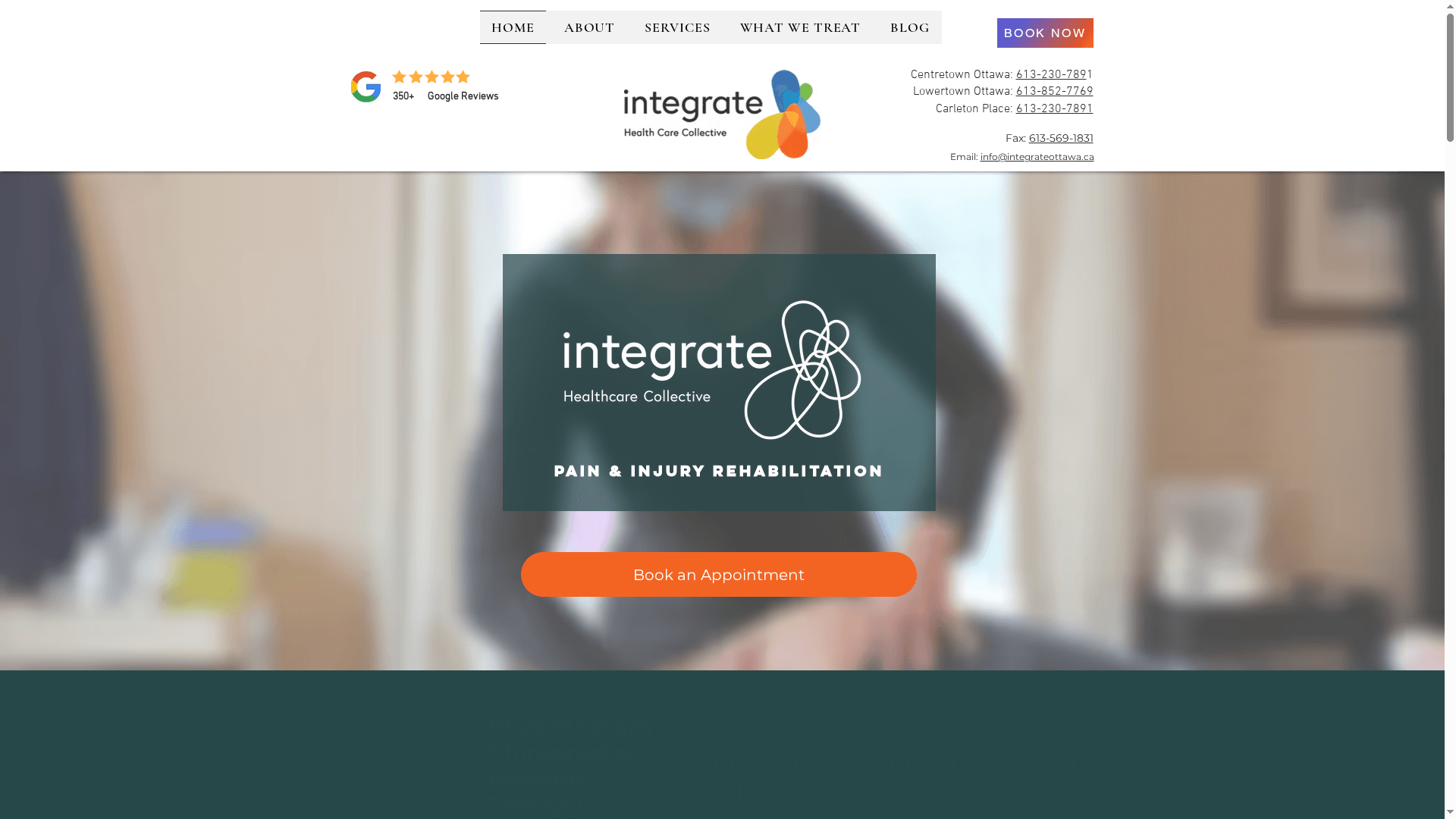How to Prepare for Chiropractic Visit: Step-by-Step Success
- Nov 16
- 8 min read

Nearly 80 percent of people feel nervous before their first chiropractic appointment. Preparing properly can ease that stress and help you get the most out of your visit. By organizing your medical information, noting your symptoms, choosing the right clothes, and double checking appointment details, you can walk in confident and ready for effective care. These simple steps make a real difference in ensuring you feel heard and supported from day one.
Table of Contents
Quick Summary
Key Point | Explanation |
1. Gather Important Medical Records | Collect previous medical records, imaging, and treatment documents to provide a comprehensive health overview. |
2. Document Current Symptoms | Maintain a detailed symptom journal to clearly communicate your health concerns and how they affect your daily life. |
3. Wear Comfortable Clothing | Choose loose, flexible clothing for your appointment to facilitate effective examination and treatment. |
4. Confirm Appointment Details | Verify appointment time, clinic location, and travel arrangements to ensure a stress-free visit. |
5. Follow Post-Visit Instructions | Adhere to your chiropractor’s care instructions to optimize recovery and support your health goals. |

|
Step 1: Gather Relevant Medical History and Documents
Preparing for your chiropractic visit means collecting all your important medical information so your practitioner can provide the most accurate care possible. This step helps create a comprehensive picture of your health and ensures your chiropractor understands your specific medical background.
Start by gathering key documents that paint a complete health portrait. You will want to collect medical records including previous diagnostic imaging like X rays or MRI scans related to your current condition. If you have had prior treatments for musculoskeletal issues or ongoing health concerns pull together documentation from previous healthcare providers. Create a folder that includes:
Medical history summary
List of current medications
Recent diagnostic test results
Imaging studies
Referral letters from other healthcare professionals
Take time to write down a detailed timeline of your current symptoms including when they started, what makes them better or worse, and any specific incidents that might have triggered your condition. This information helps your chiropractor understand the context of your pain or discomfort. Pro tip: use your smartphone to take photos of these documents so you always have a digital backup in case you misplace the physical copies.
Bring this comprehensive medical file to your first appointment and be prepared to discuss each document with your chiropractor.

This proactive approach demonstrates your commitment to your health and provides your practitioner with the critical information needed to develop an effective treatment strategy.
Step 2: List Current Concerns and Pain Points
Sitting down to prepare a detailed list of your current health concerns and pain points is a critical step in helping your chiropractor understand exactly what you are experiencing. This focused approach ensures you communicate all relevant information during your first consultation and helps your practitioner develop a targeted treatment strategy.
Start by creating a comprehensive symptom journal that tracks the nuances of your pain or discomfort. Note specific details like the location of pain, its intensity on a scale from 1 to 10, how long the pain lasts, and what activities seem to trigger or worsen your symptoms. Be as descriptive as possible about how these issues impact your daily life. For instance, explain if the pain prevents you from sleeping comfortably, working effectively, or enjoying your regular physical activities.
Consider documenting your symptoms in a structured format to help your chiropractor quickly understand your condition. Include information such as:
Exact location of pain or discomfort
Pain intensity and frequency
Duration of symptoms
Movements or activities that increase or decrease pain
Any previous treatments you have tried
Impact on your daily functioning
A helpful tip is to record a video or take photographs that demonstrate your range of motion or specific painful movements. Visual documentation can provide your chiropractor with additional insights that might be challenging to describe verbally. Be honest and thorough in your documentation this will help your healthcare provider develop the most effective treatment plan possible.
Step 3: Select Comfortable Clothing for Your Visit
Choosing the right clothing for your chiropractic appointment is more important than you might realize. Your outfit can significantly impact the effectiveness of your examination and treatment by allowing your chiropractor to assess and access key areas of your body with ease and comfort.
Opt for loose fitting stretchy clothing that provides maximum flexibility and allows unrestricted movement during your assessment. Think workout attire or soft athletic wear that lets you move freely without constraint. Avoid tight jeans restrictive suits or clothing with complex layers that might interfere with physical examination. Ideal clothing options include:
Comfortable yoga pants or athletic leggings
Loose shorts
Lightweight tank tops or t shirts
Sports bras for women during upper body assessments
Tracksuit bottoms
Consider bringing a spare change of clothes if you are coming directly from work or have concerns about your current outfit. A helpful pro tip is to dress in layers so you can easily adjust your clothing during different stages of the examination. Lightweight zip up jackets or button down shirts work particularly well as they can be quickly removed without disrupting the assessment process.
Remember that your comfort and the practitioner ability to thoroughly examine you are the primary considerations. By selecting appropriate clothing you demonstrate respect for the clinical process and set the stage for a productive chiropractic consultation that focuses entirely on understanding and addressing your specific health needs.
Step 4: Confirm Appointment Details and Clinic Location
Ensuring you have the correct appointment details and clinic location is crucial for a smooth and stress free chiropractic visit. This step helps you arrive on time and prepared for your consultation without unnecessary confusion or last minute complications.
Begin by thoroughly reviewing the confirmation email or appointment card you received. Double check the date and time of your appointment and verify the exact clinic address. If you received multiple location options from the chiropractic clinic make sure you know precisely which specific location you will be visiting. Modern chiropractic practices often have multiple branches so confirming the exact address prevents potential travel mix ups.
Take these practical steps to prepare:
Save the clinic address in your phone GPS
Check parking availability near the clinic
Note the clinic phone number for last minute questions
Calculate your travel time and plan to arrive 15 minutes early
Verify which entrance or specific building section you should use
A pro tip is to do a quick practice run or digital map reconnaissance of the clinic location before your actual appointment day. This strategy helps you understand the exact route parking situation and potential traffic challenges. If you are unfamiliar with the area or visiting a new clinic location this preparation can significantly reduce your pre appointment stress and ensure you arrive calm and ready for your chiropractic consultation.
Step 5: Review Post-Visit Care Instructions
Understanding and carefully following your chiropractor’s post visit care instructions is critical to maximizing your treatment outcomes and supporting your body’s healing process. These personalised recommendations will help you continue the progress made during your chiropractic session and prevent potential setbacks.
Pay close attention when your chiropractor explains the specific instructions for your unique condition. This might include recommended exercises stretches activity modifications or specific movement restrictions. Some instructions could involve specific rehabilitation techniques or lifestyle adjustments designed to support your recovery. Take notes during the explanation or request a written copy of the instructions to ensure you fully comprehend and can refer back to them later.
Key areas to focus on in your post visit instructions typically include:
Specific stretching or strengthening exercises
Recommended rest periods
Modifications to daily activities
Usage of heat or cold therapy
Potential pain management strategies
Follow up appointment scheduling
A pro tip is to set reminders on your phone or create a visible chart in your home that outlines your care instructions. This visual prompt helps ensure you consistently follow the recommended protocol and maintain accountability in your recovery process. Remember that these instructions are tailored specifically to your body and healing needs so following them precisely can significantly accelerate your path to improved musculoskeletal health.
Prepare Confidently for Your Chiropractic Visit and Take Charge of Your Health
Navigating your first chiropractic appointment can feel overwhelming when you are unsure about what to bring, wear, or expect. This article highlights the importance of gathering your detailed medical history, noting your pain points clearly, and confirming appointment details to ensure a productive visit. Taking these thoughtful steps helps you connect with your practitioner more effectively and get the care you deserve.
When you are ready to move from preparation to action, Integrate Ottawa’s team offers comprehensive chiropractic care backed by evidence and a collaborative approach tailored to your unique needs. Whether it is your first visit or you are returning for ongoing treatment, the experts here understand the value of personalized guidance and post-visit support to maximize your recovery journey.

Start your path to improved musculoskeletal health today by booking a consultation at one of our convenient clinic locations. Take the stress out of preparation and focus on healing with the dedicated professionals at Integrate Ottawa. Discover how proactive preparation paired with expert care leads to lasting relief. Click here to schedule your appointment now and experience confident, caring support every step of the way.
Frequently Asked Questions
How should I gather my medical history before my chiropractic visit?
Gather your relevant medical history by collecting all important documents such as medical records, recent diagnostic test results, and a list of current medications. Create a folder with these items and bring it to your appointment for your chiropractor to review.
What should I include in my symptom journal for the chiropractic consultation?
Include specific details such as the location, intensity, duration, and frequency of your pain in your symptom journal. Be thorough by noting how your symptoms impact your daily life, which will help your chiropractor understand your condition better.
What type of clothing is best to wear for a chiropractic visit?
Choose loose-fitting, comfortable clothing that allows for easy movement during your chiropractic examination. Ideal options include yoga pants, athletic leggings, or lightweight tops, as these will facilitate a thorough assessment.
How can I confirm my chiropractic appointment details?
Review your appointment confirmation email for the date, time, and exact clinic address. Save the clinic location in your phone’s GPS and plan to arrive at least 15 minutes early to avoid any last-minute complications.
What should I expect in my post-visit care instructions from my chiropractor?
Your chiropractor will provide personalized post-visit instructions that may include exercises, activity modifications, or pain management strategies. Take notes during the discussion or ask for a written copy to ensure you follow all recommendations accurately.
How can I ensure I follow my post-visit care instructions effectively?
Set reminders on your phone or create a visible chart at home to track your post-visit care instructions. This will help you stay accountable and maintain consistency in your recovery process, which can significantly improve your results.
Recommended
